My Town: Lebanon
Printable PDF Here
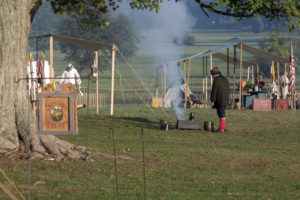
Revolutionary War reenactors on the Lebanon Green. Courtesy of the Lebanon Historical Society.
Where is my town?
Lebanon is located in the hills of eastern Connecticut. It has many hills, brooks, small rivers, and swamps.
More than 10,000 years ago, Paleo-Indians camped in the area. Later, the Mohegans hunted and fished there.
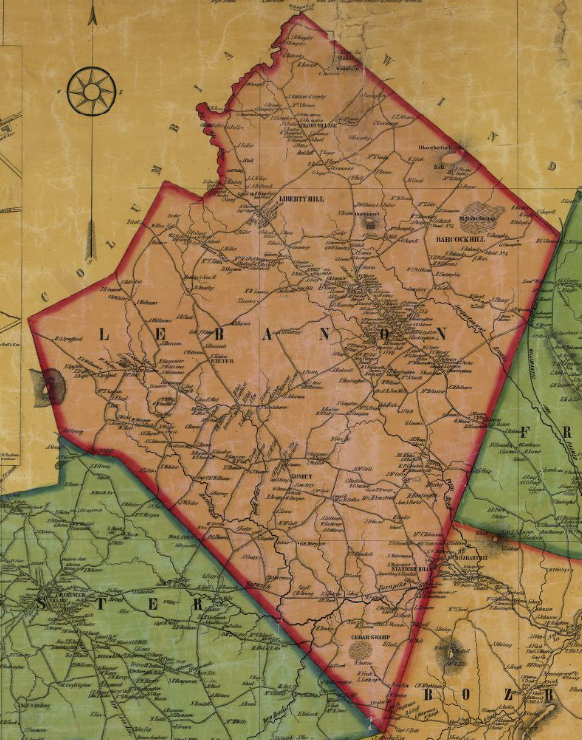
1854 map of Lebanon. Library of Congress
Between 1665 and 1692, the first English settlers secured parcels of land. They got it from the Connecticut Colony or from the family of the Mohegan sachem Uncas.
The English settlers began moving there in the early 1690s. The settlement became the town of Lebanon in 1700.
By the 1720, Lebanon was a successful farming town. Farmers sent cattle, pigs, and horses to market. They sent barrels of beef and pork. These animals and goods were sold in the ports of Norwich, New London, and East Haddam.
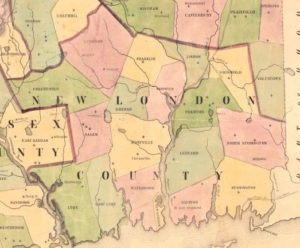
Can you find Lebanon on this 1848 map of New London County? Library of Congress.
Farmers, merchants, and ministers bought enslaved Africans and native people. The enslaved people worked on the farms and in the homes.
At the time of the American Revolution, Lebanon was one of the largest communities in the colony. It was an important place! The governor of the Connecticut Colony lived there. He led the state’s war effort. Lebanon’s William Williams represented the state at the second Continental Congress. He signed the Declaration of Independence. Lebanon was the base camp for some of the French army during the winter of 1780 – 1781.
How do its residents make a living?
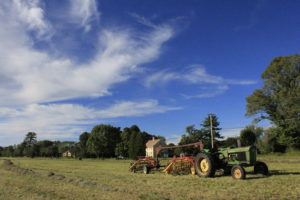
Cutting hay on the Lebanon Green. Lebanon Historical Society
Farming is still Lebanon’s main way of making a living. Unlike other towns, Lebanon did not industrialize. The livestock trade was important in the colonial period. In the 19th century, dairy farming, orchards, and vegetable farming developed. Chicken farming became important in the 20th century. Today, Lebanon has dairy farms, family farms, and a big wholesale nursery business. Every summer farmers cut hay on the green. Lebanon’s green is the only one in Connecticut that is actively farmed.
How did it grow?
Lebanon’s population peaked in 1790. After the American Revolution, people left to find opportunities in other places. They moved to places with factory jobs. They moved to places with more farmland. In the 19th century, immigrants from Ireland, Italy, and Eastern Europe came to Lebanon. In the 21st century, its population is growing again.
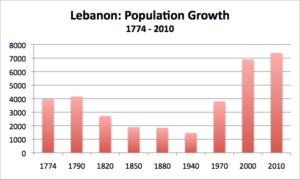
Who are its notable people?
Martha Wadsworth Brewster (1710 – c. 1757) was a poet and writer. She was one of only four women in the colonies to publish her poetry before the American Revolution. She was the first American-born woman to publish under her own name.
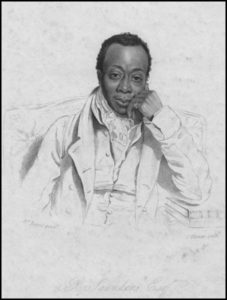
Courtesy of the Lebanon Historical Society.
Prince Saunders (c. 1784 – 1839) was the son of a free father and an enslaved mother. His mother was enslaved to Lebanon’s Hinckley family. When Prince was a boy he went with the Hinckley’s adult son George to live in Vermont. Hinckley educated Prince. In the early 1800s, Prince returned to Connecticut. He taught at a school for black children in Colchester. He left and went to New Hampshire to attend Dartmouth College. He became a leader in education for African Americans in Boston. He later became an important diplomat and advocate for Haiti.
Governor Jonathan Trumbull, Sr. (1710-1785) was a livestock
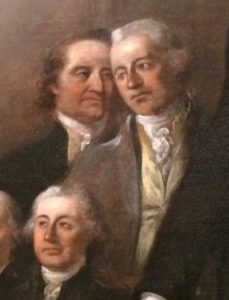
William Williams (top left) with Oliver Ellsworth (right) and Samuel Hunting, three of four Connecticans who signed the Declaration of Independence. A detail from John Trumbull’s “Signing the Declaration of Independence,” Wadsworth Atheneum
trader and businessman. He was governor of the Connecticut Colony during the Revolutionary War. He was the only colonial governor to also serve as governor of his newly-created state. Trumbull worked with national leaders to support the Continental Army.
William Williams (1731-1811) was a merchant. He held local town offices and was a judge. He was elected to the Connecticut General Assembly and represented Lebanon for more than 30 years. In July 1776, he became one of the state’s delegates to the Second Continental Congress. On August 2, 1776, he signed the Declaration of Independence.
Fun Fact
Five governors of Connecticut and the first governor of Wisconsin were born in Lebanon.
 Learn more about the Himmelsteins, a farming family in Lebanon, HERE.
Learn more about the Himmelsteins, a farming family in Lebanon, HERE.









 Learn more about the Himmelsteins, a farming family in Lebanon, HERE.
Learn more about the Himmelsteins, a farming family in Lebanon, HERE.